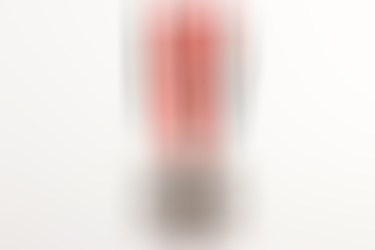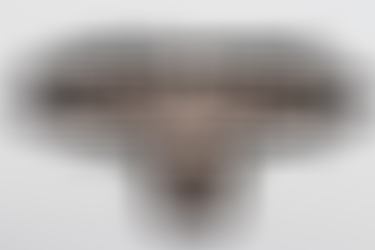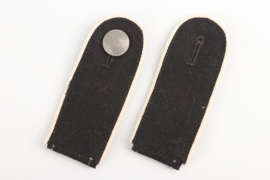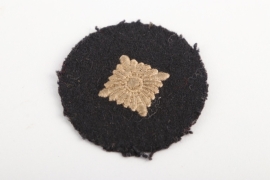2nd USA auction
Bidding on 1036 lots has ended on 22nd October 2022. 74% of all lots sold
Rolf Sperling - SS Soldbuch Pz. Gr. Rgt. 2 "SSLAH"
GBP 0,00
Own a similar product you want to sell? We are here for you at +49 8541 9053699
-
PAYMENT
-
HOW CAN I PAY FOR MY ORDER?
AUCTIONSYou will receive an e-mail confirming your successful bids the day after the auction has ended. In your personal my ratisbon's you will be able to inform us about your most convenient payment method for this order or tell us about an alternative shipping address.
If we don’t hear from you within 24 hours, we will send an invoice choosing the payment and shipping options which we think are the most comfortable ones to you. If you decide to change your shipping or payment method after receiving your invoice, just drop us a line or visit my ratisbon's/ORDERS for any more details.
SHOP ORDERSChoose your payment method when ordering and submit your order. Once your order has been received we will send an invoice including your shipping costs and your payment instructions.
After receiving the invoice, the order must be paid within 7 days.
Please contact us to discuss layaway options.To learn more about paying at ratisbon's, please see your FAQ pages.
WE ACCEPT FOLLOWING PAYMENT METHODS
-
-
Versand
-
HOW DO YOU SHIP MY NEW TREASURES?
PACKING & TRACKINGWe usually send out orders within 1-3 working days after your payment has been received. In most cases, we are faster than this! We will inform you when your goods are being dispatched and provide a tracking number, In addition, you can always check your order status at my ratisbon's/ORDERS. Delivery times will vary depending upon the delivery destination and type of shipping service you have chosen.
SHIPPING TO ALTERNATIVE ADDRESSIf you prefer to have your order shipped to your work address or a friend during your absence, we will happy to arrange this for you. Send us an email letting us know about your new shipping address and we will be happy to send an updated invoice to you.
OUR LOGISTIC PARTNERS ARE AS FOLLOWS
-
-
OUR GUARANTEE
-
 OUR GUARANTEE!
OUR GUARANTEE!We only offer collectables which to the best of our specialists knowledge are authentic. About 15% of all consignments are returned to the consignor after extensive research due to authenticity issues.
Unlike traditional auction houses we do offer a full right of return. If you are not satisfied with what you won or bought, you may return it within 14 days. Please inform us and we will instruct you on how to return the goods. For more information, please visit FAQ pages.
Important note: Cancelling bids after an auction may disappoint the consignor, who like you is a collector. This situation is easy to avoid. We encourage you not to bid on any collectable if you are unsure if it fits into your collection. Ask us to cancel your bid 24 hours prior to the end of an auction to avoid this situation.
-
COUNTRY Germany 1918 - 1945
DIMENSIONS
WEIGHT
 US LOT 62-0201
US LOT 62-0201EAN 3000000008263
 US LOT 62-0201
US LOT 62-0201PERIOD 1918 — 1945
COUNTRY Germany 1918 - 1945
MATERIAL
DIMENSIONS
MAKER
WEIGHT
COUNTRY Germany 1918 - 1945
 US LOT 62-0201
US LOT 62-0201DIMENSIONS
EAN 3000000008263
MAKER
WEIGHT
Description
This SS Soldbuch is part of the offered grouping from Rolf Sperling. He was born October 22, 1926 in Quedlinburg and passed away in Danville, PA, USA on June 11, 2005. As a member of the Hitler Youth “HJ” he immediately volunteered straight from school on May 15, 1944, into the Waffen-SS and was trained as a Panzer Grenadier in the SS Tank Grenadier School Battalion ( SS-Pz.Gren. Ausb. u.Ers. Btl. I) attached to the SS-Pz. Gren. Rgt. 2 Leibstandarte SS Adolf Hitler, 12. Kompanie. He took part in the last battles of WWI and was captured during Operation Lüttich. Here a brief history on the operation and his possible involvement.
On July 25, 1944, following six weeks of attritional warfare along a stalemated front, American forces under General Omar Bradley succeeded in breaking through the German defenses as part of Operation Cobra. On August 1, American forces captured Avranches. Simultaneously, General George Patton's Third United States Army was activated. With the capture of Avranches, American forces were able to "turn the corner" of Normandy, pushing into Brittany and the coastal ports. As a result, German defensive operations could no longer be anchored against the coast on both flanks. By August 4, seven divisions of the 3rd Army had entered Brittany.
With the American breakthrough, in spite of this costly victory, the Allied forces remained vastly superior in numbers. Five days later the Americans saw the chance to break out of their beachhead. The weakened German defense could not keep up with the savage battle of attrition as little or no reinforcements had arrived, supplies were attacked from the air, and movement by day was made impossible. Hitler forbade any retreat and, instead, ordered an assault to be made under the code name Operation Lüttich. According to Hitler, three qualifications had to be met for the attack to proceed. "Von Kluge [Günther von Kluge, the Supreme Commander West] must believe in it. He must be able to detach enough armor from the main front in Normandy to create an effective striking force, and he must achieve surprise". For his counteroffensive, Von Kluge would have available the XLVII Panzer Corps, consisting of the 2nd Panzer Division, part of the 1st SS Panzer Division, the 2nd SS Panzer Division and the 116th Panzer Division.
The XLVII Panzer Corps was supported by two infantry divisions and five battle groups, formed from the remnants of the Panzer-Lehr Division and four equally battered infantry divisions. Although Hitler promised more reinforcements, von Kluge was skeptical of the chance of their arrival. Aware of the increasing number of American troops moving to his south—creating the potential of being outflanked—von Kluge elected to begin the offensive earlier than originally planned, with the attack commencing at midnight on August 6, 1944.
To avoid alerting American forces to the imminence of a German attack, Operation Lüttich would not use artillery bombardments to precede the attack. The initial attacks, consisting of 300 tanks, would hit the 30th Infantry Division east of Mortain, then cut through American defenses to reach the coast. Had surprise been achieved, the attack would likely have succeeded. However, Allied-decoders at Ultra had intercepted the codes for Operation Lüttich by August 4. As a result, Bradley was able to obtain air support from both the US 9th Air Force and the RAF.
LSSAH, together with the other divisions went on the attack on August 7 after moving to the assembly areas on August 5 and 6. The 1st SS Panzer Regiment, along with two Panzergrenadier Battalions, one Pionier Company and the division's Flak Battalion, were used for the attack. The weather was not suited for flying that morning, which only disadvantaged the Allies. The result was that the attack went smoothly at first, despite the fact that the Allies knew the attack was coming. The 2nd SS Panzer Division managed to recapture Mortain, and an armored Kampfgruppe under Joachim Peiper managed to get as far as Bourlopin, but was stopped by massive Allied air power, and American counterattacks. Another attempt was mounted the next day to capture Avranches, but it failed.
German soldiers surrendering in St. Lambert on August 19, 1944.
This marked the end of the campaign in Normandy; the Leibstandarte was encircled by the Americans and Canadians, supported by the 1st Polish Armoured Division, in what would be called the Falaise pocket, but by then the formation was reduced to several small Kampfgruppen. Leibstandarte withdrew from the pocket with Unterführers and Führers each taking the lead of a small Kampfgruppe and smashing through the ring, on August 22, after which no combat-ready tanks or artillery pieces were reported. The whole campaign caused some 5,000 casualties to the LSSAH. During their retreat from France, members of the LSSAH and Hitlerjugend division murdered 34 French civilians in the towns of Tavaux and Plomion.
Condition
1-
Seller
History Trader Inc., 521 Thorn Street #165, Sewickly, PA 15143-0165, USA











